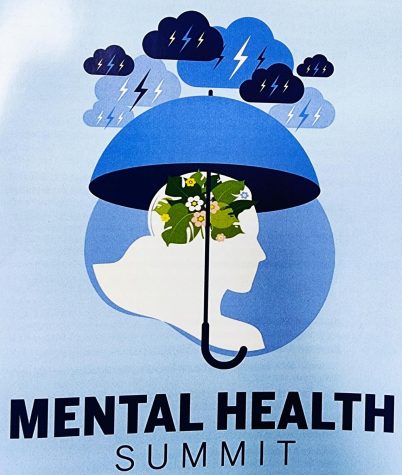Hidden Illnesses
The ugly truth of living with a chronic illness
Photo illustration by Louis Herlihy
Abby Valkovci, general studies senior, wakes up every morning feeling exhausted from the night before. It was not from drinking or staying out too late, but from an illness that attacks her from the inside out.
Valkovci suffers from multiple chronic illnesses including ankylosing spondylitis, chronic fatigue syndrome and fibromyalgia. These illnesses leave her lying in bed awake at night in tears because the pain can become too much.
The Truth Behind the Illness
Chronic illnesses are diseases that attack the inside of your body and have lifelong effects. These diseases cannot fix themselves and do not currently have a cure. Some examples of chronic illnesses are: diabetes, Crohn’s disease, Lupus, cancers, cystic fibrosis and anemia.
Miranda Morris, psychology junior, describes chronic illnesses as something that drains her entire body, soul and mind.
Morris laughs as she explains her illnesses because they seemed just to multiply after her initial diagnosis. She suffers from myofascial pain syndrome, chronic fatigue syndrome, fibromyalgia and irritable bowel syndrome.
“You don’t want your illness to define you, but yet it always does,” Morris said.
A “Normal” Day
Morris and Valkovci explain their diagnosis as obstacles they will always face. Their treatment plans include handfuls of medications per day, physical therapy and injections. Morris carries extra pills around with her daily that help ease the pain so that she can get through the day.
“Often times I feel bad when people pity me, so I do not say anything unless it’s really bad and I need help,” Morris said. I just try to act like I’m okay.”
Valkovci says that sometimes it is easier to tell someone that she is okay just so she does not have to explain what is wrong with her.
“My normal day is what someone else would think of as a horrible day, it’s just never good,” Valkovci said.
The Trigger
Triggers are things that can make a chronic illness flare up and cause issues for the person who is suffering.
Flare ups differ depending on the illness itself, but can be summed up as the symptoms acting up and causing the person to not normally function.
Physical activity is the main trigger for both Morris and Valkovci. Simple tasks such as working in retail can take a toll on their bodies.
Valkovci recalls coming home after a long day of her retail job and taking five minutes just to remove her shoes because she was in so much pain and her feet were swollen. She says little things like taking the elevator to go up one floor instead of the stairs can help her conserve her energy for other activities.
Morris speaks of her love for dance and theatre and having to give them up due to her illnesses.
“It was something I loved, but I had to let go of because I could not handle the physical demand,” Morris said.
When asked about different treatment methods, the two say they will try anything. Non-medication treatments like crystal therapy, acupuncture and laser therapy have been recommended to ease their symptoms.
“Sometimes I laugh at what people come up with, but I would try anything to get rid of the pain,” Morris said.
Valkovci takes at least two showers a day to help soothe her muscles. Both women take what they call “naps” during the day to relax. Due to their medication they are unable to completely fall asleep during the day, however taking time to lay down in the darkness is a form of therapy that they both enjoy.
“Just turning off my brain and resting my body gives me strength back,” Valkovci said.
Becoming Educated
Morris currently has a handicap parking permit, given to her by her doctor.
“The thing that sucks is I have an invisible illness and people have their opinions that I’m fine because I look fine and that I am just faking it,” Morris said.
Morris often feels that she must look sick so that other people will not question her illness. Even some of her family members have questioned her pain.
“It’s sad that I have to look like something is wrong with me just to make others feel better,” Morris said.
Valkovci says that even some doctors have questioned her illnesses.
Explaining chronic illnesses to people is something they say they must ease into.
“You have to see if they’re even willing to understand,” Valkovci said.
Morris explains chronic illnesses to people like having the aches and pains of the flu, but every day, nonstop. She says it’s easier to talk to people who are open minded about it because they are willing to listen and understand.
“Some people are just very judgemental and they already have their mind made up about you so it’s hard to explain things to them,” Morris said.
Morris says that the best thing people can do to understand illnesses is to research it on their own. She said it’s nice when people come to her with knowledge of what she is going through so she may better explain her situation.
“I try to be open with everyone because I want people to know that disabilities come in all shapes and sizes,” Valkovci said.
She says that most times people do not fully understand.
“People see my parking pass and say ‘oh, I want one,’ but they don’t understand the things that come with it, like no you don’t want this,” Valkovci said.
The women say they are grateful for those who show support for the chronic illness community and encourage others to become aware of the issue. Chronic illnesses can be in anyone’s future, regardless of current health, and are a topic that needs to be discussed. One way that these illnesses might find their cure is by having society ready to fight them.






